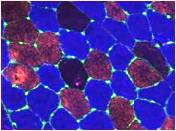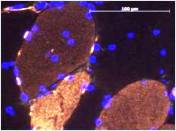Research activities in MoB also address various neuromuscular and biomechanical aspects related to physical activity and health. Specifically, training-induced changes in mechanical muscle function (in vivo contractility) are studied closely, including changes in neuromuscular activity, movement patterns, musculo-tendon function, and postural balance. The obtained data contribute to an increased knowledge about how these elements are affected by exercise, inactivity, immobilisation, ageing, fatigue, damage, and overloading in the musculoskeletal system.
Research activities in MoB typically involves concurrent use of multiple assessment methods, including quantification of maximal muscle power, rapid force capacity (rate of force development) and postural balance in given movement conditions (force platform, isokinetic dynamometry, Nottingham power rig), supplemented by measurements of neuromuscular activity (EMG recording), analysis of joint angles and movement speeds (kinematic analysis, electro-goniometry), as well as measurements of muscle-tendon-joint loading levels during different types of movements (inverse dynamics analysis, isolated tissue loading).
Key areas within MoB's biomechanical research activities comprise (i) development, validation and quality assurance of biomechanical and neuromuscular analysis methods, (ii) initiation and implementation of integrated biomechanical-physiological research projects, and (iii) initiation and implementation of intervention studies based on physical exercise, including studies with a strong clinical focus. Often various neuromuscular and biomechanical aspects are examined to evaluate the effectiveness of given intervention/exercise regimes in athletes, non-athletes, ageing adults and patients alike, and more importantly to gain increased knowledge about the specific adaption mechanisms responsible for the training-induced plasticity in mechanical muscle output and neuromuscular function, respectively.
 |
 |
 |
You may also take a look at Muscle physiological research areas
See examples of on-going research projects at MoB